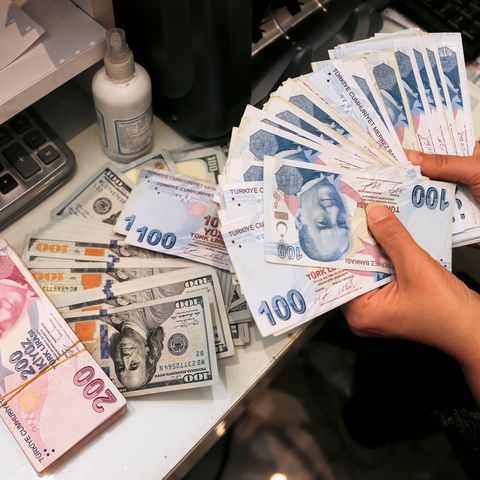Eight Techniques To Uncover Counterfeit Money
Though UV counterfeit detection lamps and counterfeit money pens help tools, there are lots of other ways to tell in case a bill is authentic or counterfeit. Physical characteristics of the banknote, like ink, watermarks, and text, are intentional security measures to help recognize authentic money.

When retail associates learn to spot an imitation $100 bill, they’re able to help in reducing the probability of a business suffering a loss of profits of lots of money. Listed here is a list of eight ways to know if an invoice is real or counterfeit:
1. Color-shifting Ink
One of the first what to verify if the bill is authentic is actually the balance denomination on the base right-hand corner has color-shifting ink. Rediscovering the reassurance of 1996, all bills of $5 or more have this security feature. In the event you hold a new series bill (except for the new $5 bill) and tilt it forward and backward, the numeral within the lower right-hand corner shifts from green to black or from gold to green.
2. Watermark
The watermark is really a characteristic security feature of authentic banknotes. New bills utilize a watermark that’s can be a replica in the face for the bill. On other banknotes, it is just an oval spot. Here are some things to remember when examining a bill’s watermark:
• The watermark must only be visible when you contain the bill up to the light.
• The watermark ought to be about the right side from the bill.
• When the watermark can be a face, it should exactly match the facial skin on the bill. Sometimes counterfeits bleach lower bills and reprint them with higher values, in that case the face wouldn’t match the watermark.
• If there is no watermark or even the watermark is visible without being held up on the light, the check is most probably a counterfeit.
3. Blurry Borders, Printing, or Text
An automated sore point for counterfeit bills is noticeably blurry borders, printing, or text on the bill. Authentic bills are created using die-cut printing plates that create impressively fine lines, so that they look extremely detailed. Counterfeit printers are usually not capable of exactly the same a higher level detail. Require a critical look, especially at the borders, to see if you can find any blurred parts from the bill. Authentic banknotes have microprinting, or finely printed text situated in various places on the bill. In the event the microprinting is unreadable, even within magnification device ., it is probably counterfeit.
4. Raised Printing
All authentic banknotes have risen printing, which can be challenging for counterfeiters to reproduce. To detect raised printing, run your fingernail carefully on the note. You need to feel some vibration on your nail from the ridges in the raised printing. In case you don’t feel this texture, then you should look into the bill further.
5. Security Thread with Microprinting
The protection thread is often a thin imbedded strip running completely evidently of a banknote. Inside the $10 and $50 bills the security strip can be found off to the right in the portrait, along with the $5, $20, and $100 bills it’s located simply to the left.
Authentic bills have microprinting inside the security thread as another layer of security. Below is a report on the microprinted phrases on authentic banknotes:
• $5 bill says “USA FIVE”
• $10 bill says “USA TEN”
• $20 bill says “USA TWENTY”
• $50 bill says “USA 50”
• $100 bill says “USA 100”
6. Ultraviolet Glow
Counterfeit detection tools and technology use ultraviolet light because this is a clear-cut method of telling in case a bill is counterfeit. The security thread on authentic bills glow under ultraviolet light within the following colors:
• $5 bill glows blue
• $10 bill glows orange
• $20 bill glows green
• $50 bill glows yellow
• $100 bill glows red/pink
7. Red and Blue Threads
Invest the an end look at a traditional banknote, you can see that you will find really small red and blue threads woven in the fabric with the bill. Although counterfeit printers make an effort to replicate this effect by printing a design of red and blue threads onto counterfeit bills, if you can note that this printing is just surface level, then it’s likely the bill is counterfeit.
8. Ghd serial numbers
The worst thing to confirm a bill is the serial number. The letter that starts a bill’s serial number matches a specific year, therefore if the letter doesn’t match the year printed for the bill, it is counterfeit. Below is their email list of letter-to-year correspondence:
• E = 2004
• G = 2004A
• I = 2006
• J = 2009
• L = 2009A
These precautionary features specified not just in deter criminals from attempting to counterfeit cash but to help individuals and businesses recognize counterfeit money when they find it.
To get more information about where to buy fake money check out this useful site: look at here now